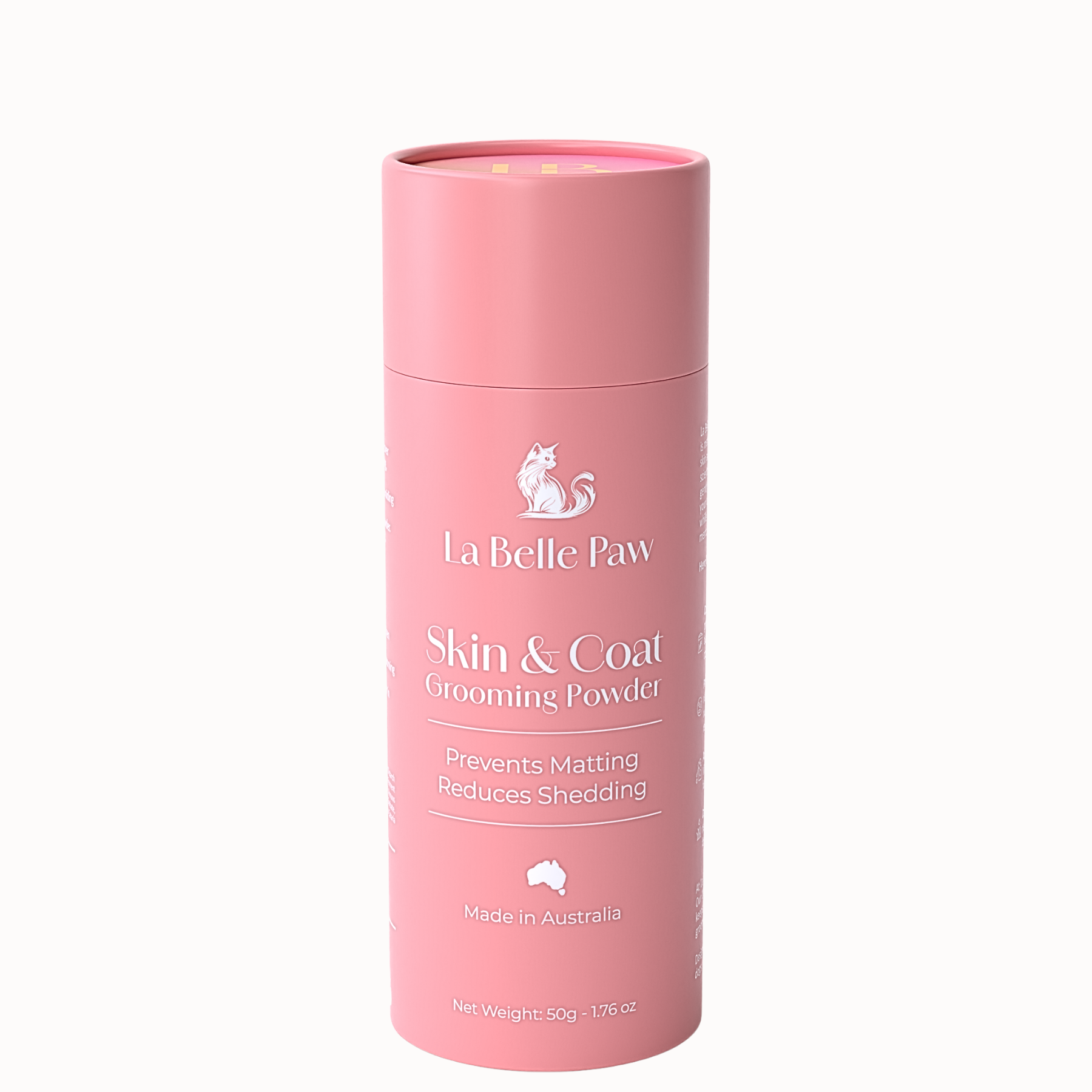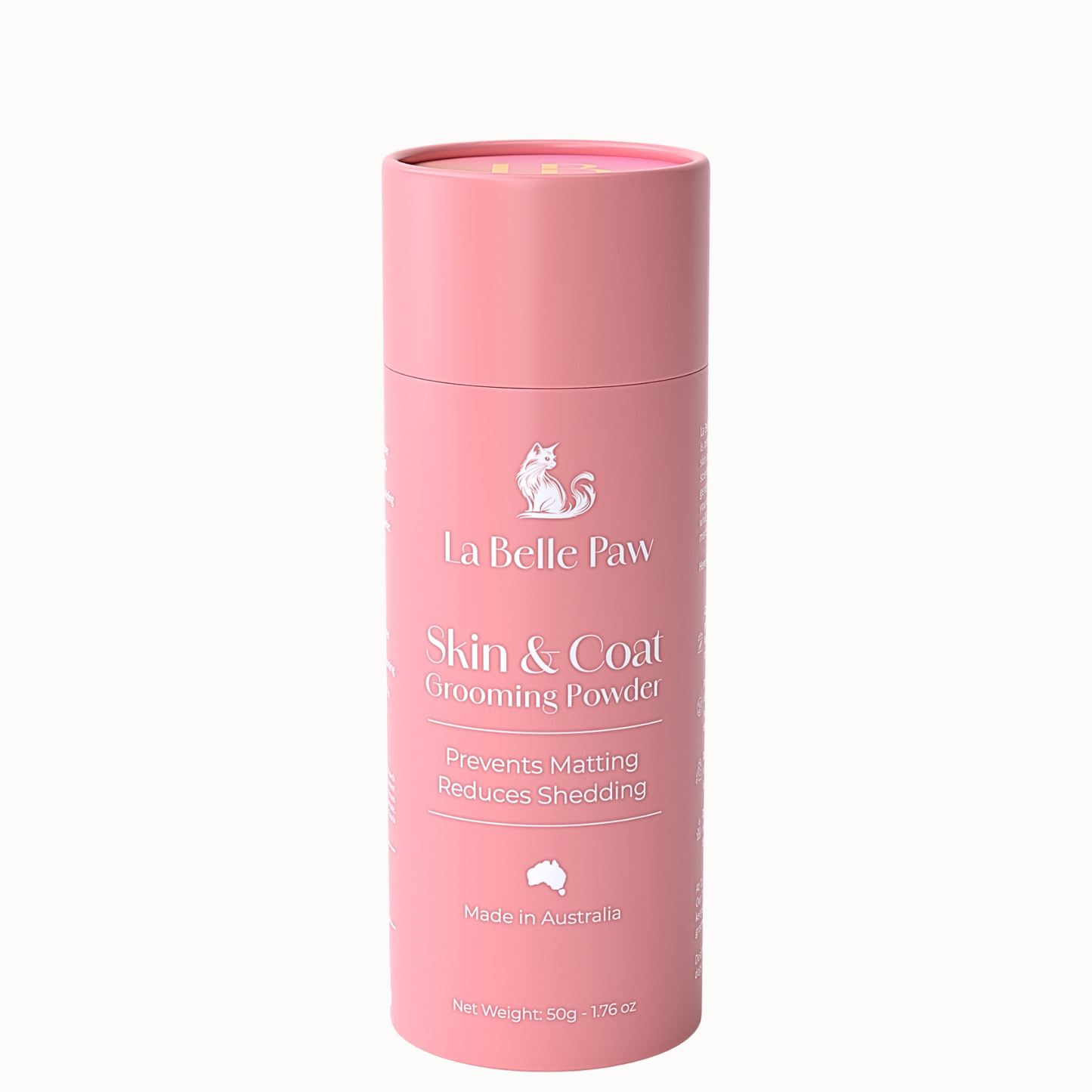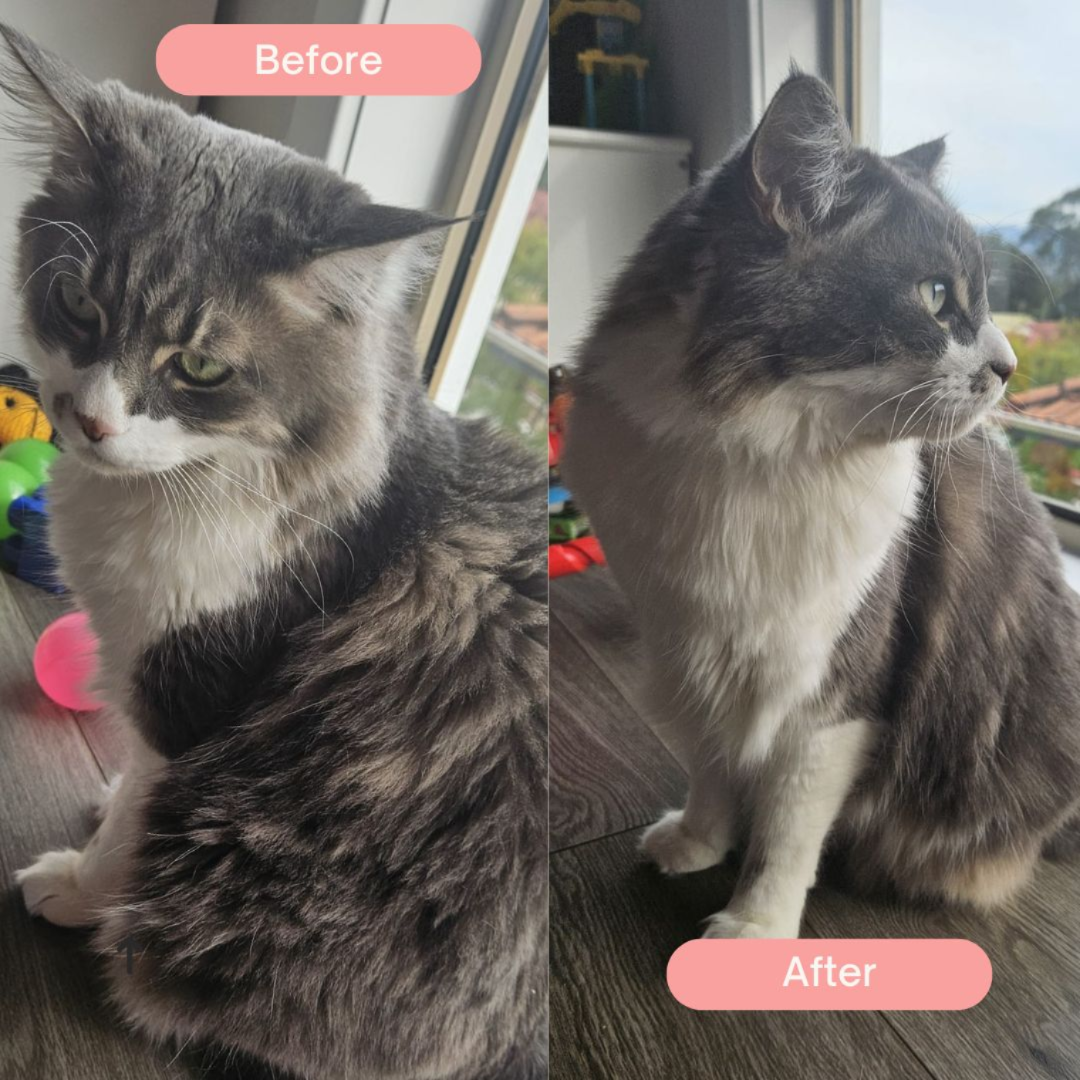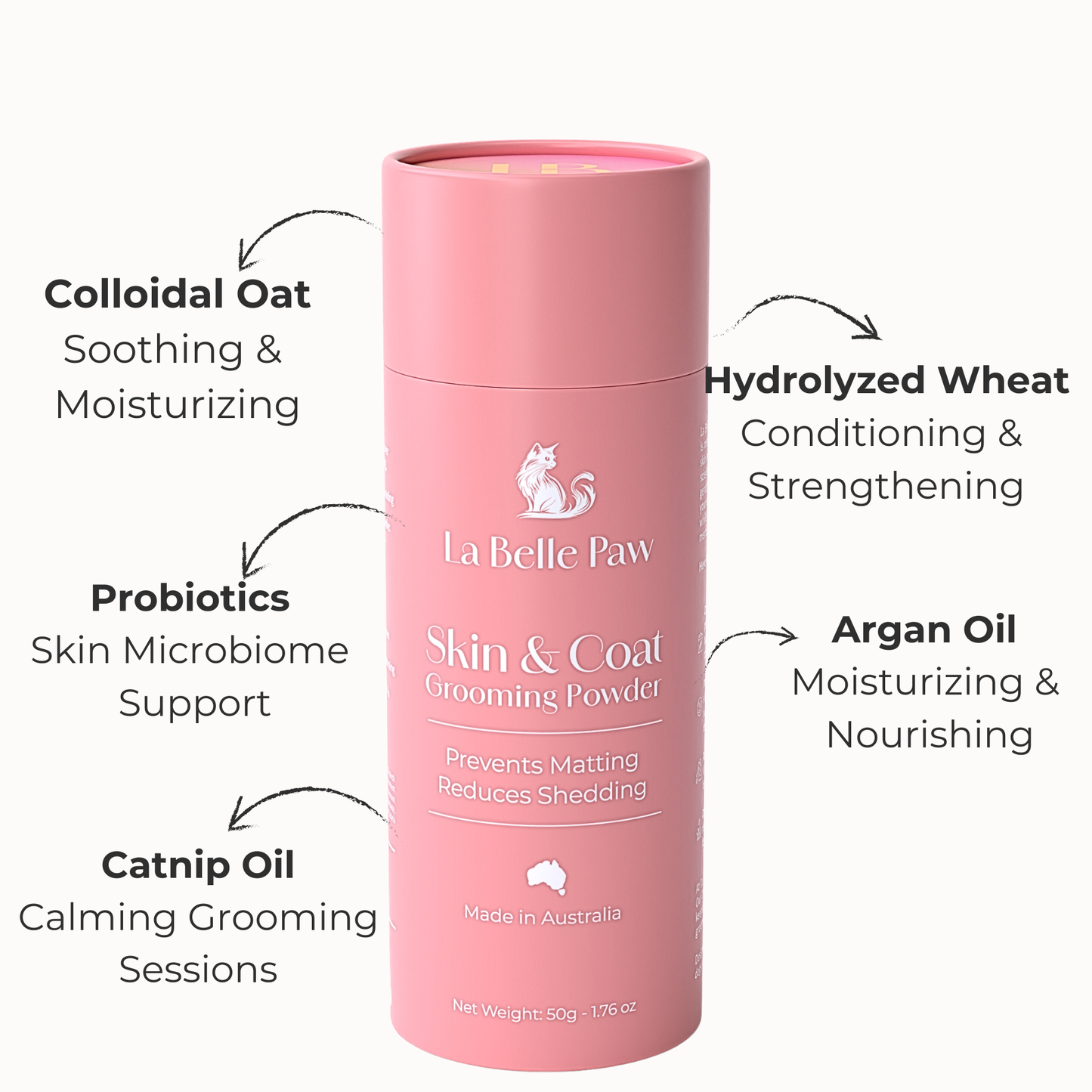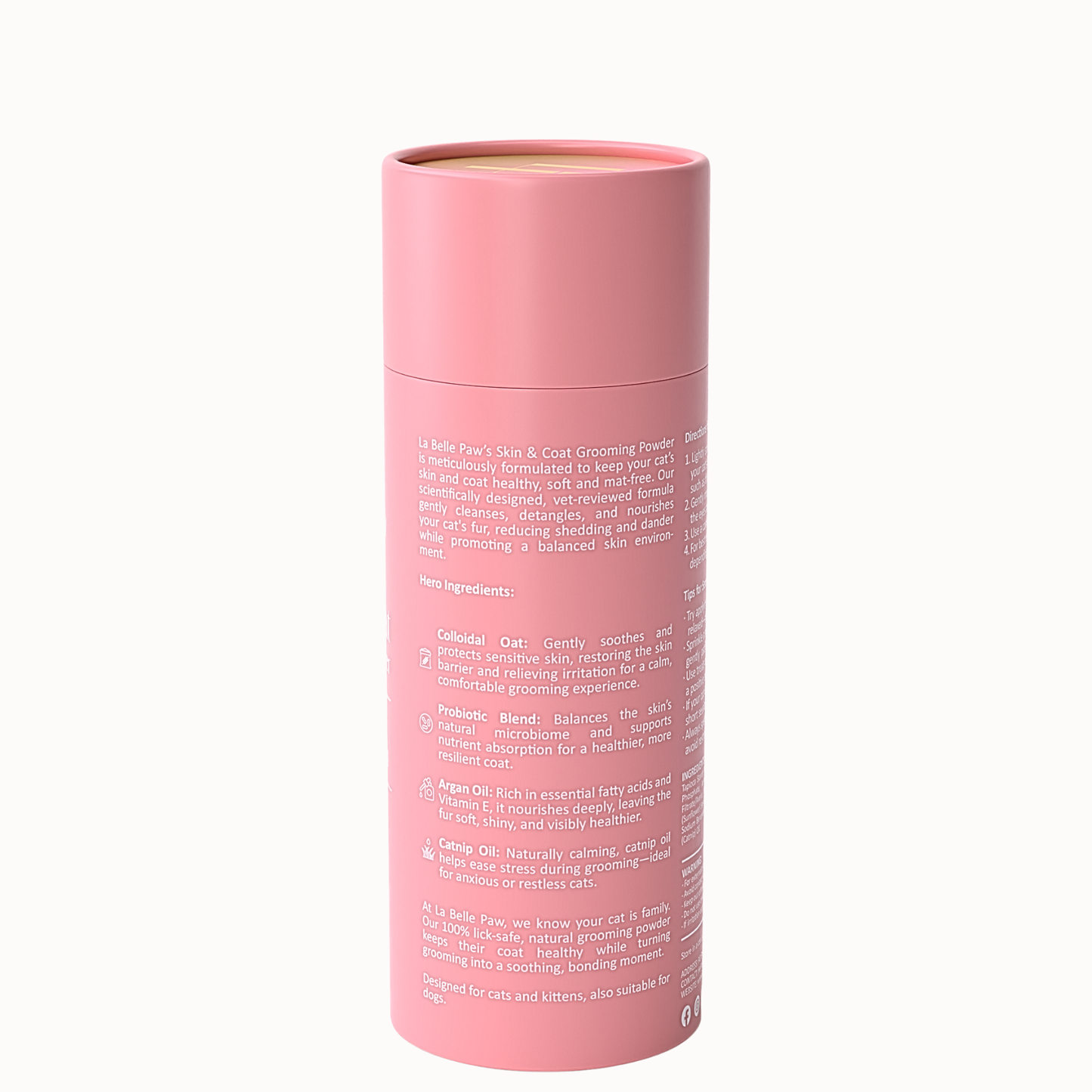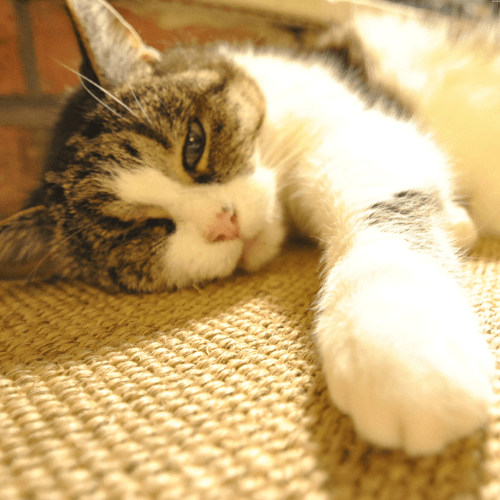
What Are Hairballs and How to Prevent Them?
Share
Introduction
As cat owners, many of us have witnessed the unpleasant moment when our feline friends cough up a hairball. Hairballs, while common, can be distressing for both cats and their owners. But what exactly are hairballs, why do they form, and most importantly, how can they be prevented? Drawing on expert insights from Anita Kelsey’s work, we’ll explore the causes of hairballs and provide practical tips to keep your cat healthy and comfortable.
What Are Hairballs?
Hairballs, scientifically known as trichobezoars, are clumps of fur that accumulate in a cat’s digestive system. Cats are meticulous groomers, and during grooming, they ingest loose fur. While most of this fur passes through the digestive tract and is excreted, some of it can accumulate in the stomach, forming a hairball.
Hairballs are typically cylindrical, as they pass through the narrow esophagus when regurgitated. According to Anita Kelsey, occasional hairballs are normal, but frequent occurrences or difficulty passing them could signal a problem that warrants further attention.
Why Do Hairballs Form?
The formation of hairballs is primarily linked to a cat’s grooming habits, coat type, and overall health. Anita Kelsey identifies the following common factors:
-
Excessive Grooming: Cats that groom themselves frequently are more likely to ingest significant amounts of fur, leading to an increased risk of hairball formation.
-
Long-Haired Breeds: Breeds like Persians and Maine Coons are more prone to hairballs due to their dense, long fur.
-
Shedding Seasons: During seasonal shedding, cats lose more fur, increasing the likelihood of ingestion.
-
Digestive Issues: Cats with digestive problems may struggle to pass ingested fur naturally, which can result in hairball formation.
Signs of Hairballs
While hairballs are a natural part of a cat’s life, excessive or problematic hairballs can lead to:
-
Frequent coughing, gagging, or retching.
-
Vomiting of cylindrical clumps of fur.
-
Loss of appetite.
-
Constipation or diarrhea.
-
Lethargy or signs of discomfort.
If your cat exhibits these symptoms frequently, Anita Kelsey advises consulting a veterinarian to rule out underlying health issues, such as intestinal blockages.
How to Prevent Hairballs
Preventing hairballs involves addressing the root causes and helping your cat manage their grooming habits effectively. Based on Anita Kelsey’s recommendations, here are some practical strategies:
-
Regular Grooming
-
Brush your cat frequently to remove loose fur before it can be ingested. For long-haired breeds, daily brushing with tools like slicker brushes or metal combs can significantly reduce shedding.
-
Use a deshedding tool during shedding seasons to minimise loose fur and prevent buildup.
-
-
Specialized Diets
-
Provide high-fiber cat food or hairball control formulas. These diets are designed to improve digestion and help fur pass more easily through the digestive tract.
-
-
Hydration
-
Ensure your cat has access to fresh, clean water. Proper hydration supports healthy digestion and reduces the risk of fur accumulating in the stomach.
-
-
Encourage Play and Activity
-
Play with your cat to distract them from over-grooming, especially if they tend to groom out of boredom or stress. Increased activity also promotes overall well-being.
-
-
Grooming Products
-
Use grooming powders or wipes specifically formulated to manage shedding and support skin and coat health. Non-toxic, natural solutions can be particularly effective.
-
-
Hairball Remedies
-
Consider hairball prevention supplements, such as gels or pastes, that lubricate the digestive tract and promote the smooth passage of ingested fur.
-
When to See a Vet
While most hairballs are harmless, excessive hairballs or signs of distress warrant a visit to the vet. Persistent symptoms could indicate more serious issues, such as intestinal blockages, which require immediate attention. Anita Kelsey emphasizes the importance of proactive veterinary care in such cases.
Conclusion
Hairballs are a natural byproduct of a cat’s grooming habits, but they don’t have to be a persistent problem. By implementing regular grooming routines, providing a healthy diet, and keeping your cat hydrated, you can significantly reduce the frequency of hairballs. Not only will these steps improve your cat’s coat health, but they’ll also make life more comfortable for your furry companion.
Take proactive steps today to keep your cat healthy and happy, and say goodbye to those troublesome hairballs, as recommended by feline behaviour expert Anita Kelsey!
To further help reduce shedding and support your cat's coat health, consider trying our Skin & Coat Grooming Powder. Specially formulated with non-toxic, natural ingredients, it’s designed to make grooming easier while keeping your cat’s fur healthy, shiny, and mat-free. Give it a try and see the difference it makes for your feline friend!


